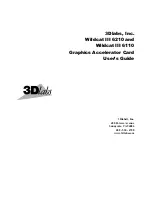
LTE Standard Module Series
EC20 R2.1 Mini PCIe Hardware Design
EC20_R2.1_Mini_PCIe_Hardware_Design 22 / 51
USB_DP
USB_DM
GND
USB_DP
USB_DM
GND
L1
Close to Module
R3
R4
Test Points
NM_0R
NM_0R
Minimize these stubs
Module
MCU
ESD Array
Figure 5: Reference Circuit of USB Interface
A common mode choke
L1 is recommended to be added in series between the module and customer’s
MCU in order to suppress EMI spurious transmission
. Meanwhile, the 0Ω resistors (R3 and R4) should be
added in series between the module and the test points so as to facilitate debugging, and the resistors are
not mounted by default. In order to ensure the integrity of USB data line signal, L1/R3/R4 components
must be placed close to the module, and also R3 and R4 should be placed close to each other. The extra
stubs of trace must be as short as possible.
Please follow the requirements below during USB interface design so as to meet USB 2.0 specification.
It is important to route the USB signal traces as differential pairs with total grounding. The impedance
of USB differential trace is 90
Ω.
Do not route signal traces under crystals, oscillators, magnetic devices or RF signal traces. It is
important to route the USB differential traces in inner-layer with ground shielding on not only upper
and lower layers but also right and left sides.
Special attention should be paid to the selection of ESD device on the USB data line. Its parasitic
capacitance should not exceed 2pF and should be placed as close as possible to the USB interface.
3.8. (U)SIM Interface
EC20 R2.1 Mini PCIe’s (U)SIM interface circuitry meets ETSI and IMT-2000 requirements. Both 1.8V and
3.0V (U)SIM cards are supported. The following table shows the pin definition of the (U)SIM interface.
Table 10: Pin Definition of (U)SIM Interface
Pin Name
Pin No.
I/O
Power Domain
Description
















































